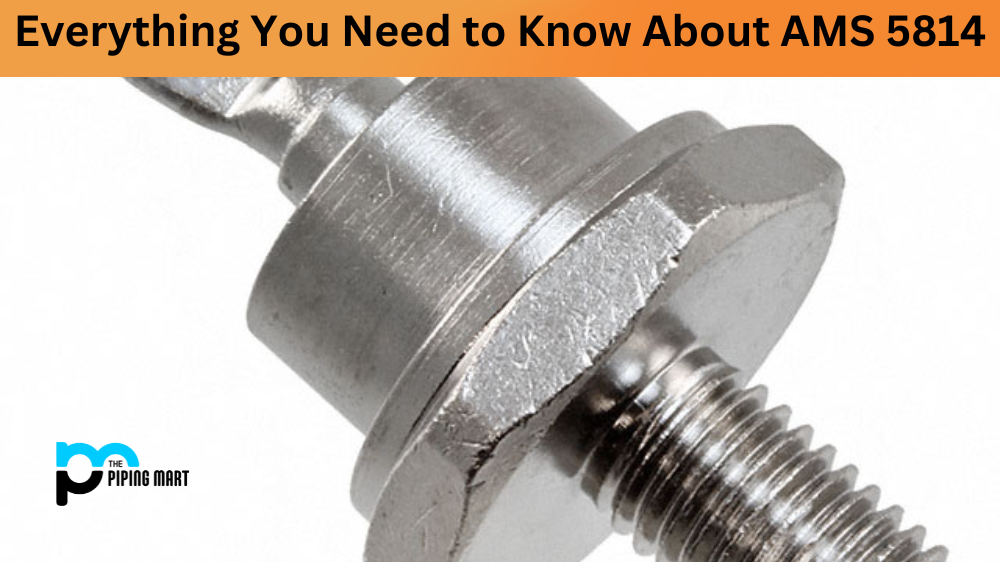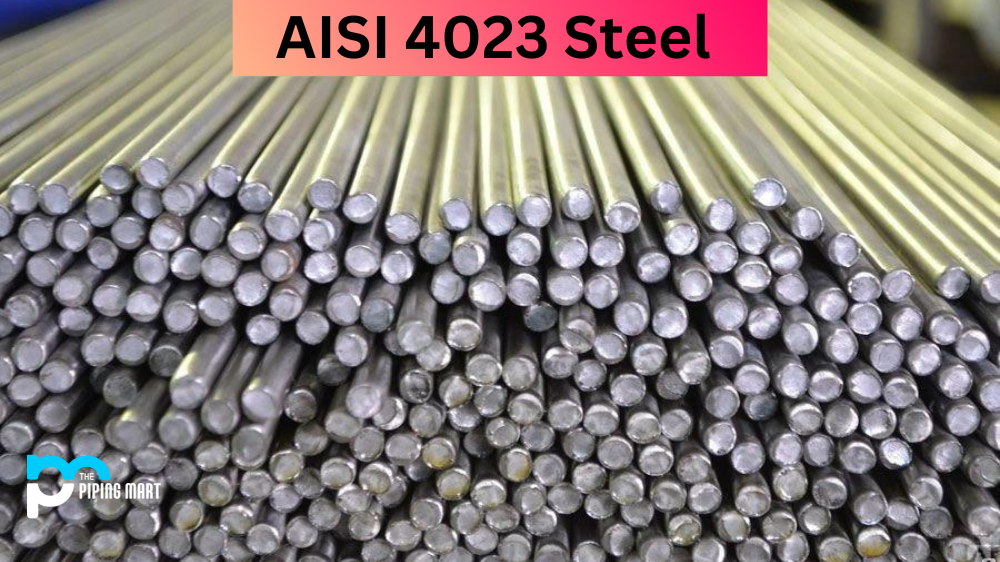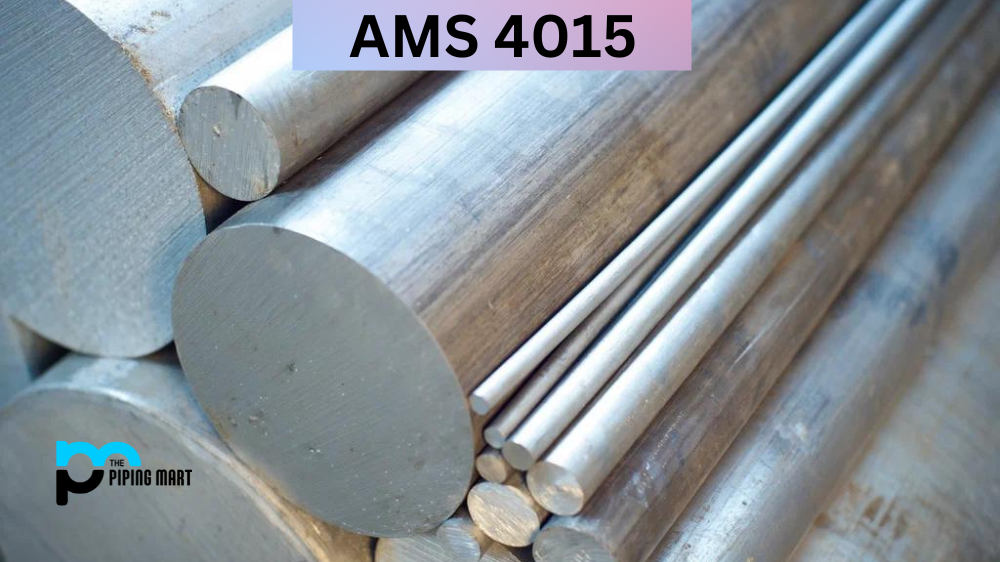SAE/AISI 1109, a low-carbon steel prized for its formability and weldability, finds applications in diverse sectors like Agriculture, Automotive, Construction, and Pipes. Beyond its versatility, the steel exhibits commendable corrosion and heat resistance. With a medium carbon content, UNS G11090 and SAE 1110, it boasts exceptional strength and toughness, ideal for wear-resistant components. Enhanced by manganese and copper, it excels in Machinability, Weldability, and hardenability, making it a favored choice for manufacturers. Recognized for cost-effectiveness, SAE/AISI 1109 is a reliable and durable material in various industrial applications.
What Forms of AISI 1109 is Available at Piping Mart?
- Nut
- Bar
- Bolt
- Pipe
- Screw
- Tubing
- Valves
- Washers
- Flanges
- Fasteners
- Electrodes
- Stud Bolts
- Sheet Plates
- Pipe Fittings
- Forged Fitting
- Instrumentation Fittings
AISI 1109 Composition
SAE/AISI 1109 carbon steel comprises mainly iron and carbon, forming a sturdy base with enhanced strength and hardness. Small amounts of manganese, sulfur, and phosphorus may be added to improve machinability and weldability. Known for durability, this alloy is favored in applications requiring robust performance and resilience.
| Carbon (C%) | Manganese (Mn%) | Silicon (Si%) | Phosphorus (P%) | Sulfur (S%) |
|---|---|---|---|---|
| Min: 0,07 Max: 0,13 | Min: 0,70 Max: 1,10 | ≤ 0,40 | 0,06 | Min: 0,15 Max: 0,25 |
AISI 1109 Physical Properties
The density of AISI 1109 carbon steel, an essential physical characteristic, usually falls within the range of approximately 7.87 grams per cubic centimeter (g/cm³). This metric signifies the material’s mass per unit volume, offering valuable insights for engineering and manufacturing purposes. Minor variations in specific density may arise from diverse manufacturing methods and alloy compositions.
| Physical Properties | Metric | English | Comments |
|---|---|---|---|
| Density | 7.87 g/cc | 0.284 lb/in³ | (AISI 1008) |
AISI 1109 Mechanical Properties
AISI 1109 steel is categorized as a low-carbon, cold-worked steel, distinguishing it from other steel types by its notably unique mechanical properties attributed to its minimal carbon content. The yield strength and tensile strength of AISI 1109 are notably lower than other grades within this material category. This characteristic proves advantageous as it imparts a softer quality to the steel, facilitating ease of shaping or bending without incurring significant damage during the forming process. Furthermore, its relatively low elastic modulus renders it well-suited for applications demanding a combination of flexibility and strength, such as in producing springs and structural components. Despite its inherent softness, the hardness can be enhanced through tempering, making AISI 1109 an outstanding choice for diverse fabrication requirements.
AISI 1109 Equivalent
| MATERIAL-NUMBER | DIN/EN | BSI/AFNOR | ASTM | AISI/SAE |
|---|---|---|---|---|
| 1.0721 | 10 S20 | G 11090, G 11080 | B1111, 1111, 1109, 1108 |
AISI 1109 Uses
SAE/AISI 1109 is a type of low-carbon steel known for its favorable attributes of good formability and weldability. Widely employed in various applications, this steel is useful in sectors like agricultural equipment, automotive parts, construction equipment, and pipes and tubes. Its versatile nature and compatibility with forming and welding processes make SAE/AISI 1109 a preferred choice in diverse industries, contributing to its widespread use in manufacturing components for agricultural Machinery, Automotive applications, Construction projects, and the production of pipes and tubes.
AISI 1109 Uses in Industries
- Construction Industry
- Automotive Industry
- Oil and Gas Industry
- Manufacturing Industry
- Aerospace Industry
AISI 1109 Corrosion Resistance
Utilizing SAE/AISI 1109 steel comes with the notable advantage of providing effective corrosion resistance. This particular steel variant is frequently chosen for applications in environments prone to exposure to corrosive elements like saltwater or various chemicals. Its inherent ability to withstand corrosion makes it a preferred material in scenarios where resilience against such environmental factors is crucial.
AISI 1109 Heat Resistance
Another notable attribute of SAE/AISI 1109 steel is its commendable heat resistance. This characteristic implies that the steel possesses the ability to endure elevated temperatures without experiencing a loss in strength or becoming brittle. The heat resistance of SAE/AISI 1109 steel enhances its versatility, allowing it to maintain its structural integrity and mechanical properties even under high-temperature conditions. This quality makes it a reliable choice for applications where exposure to elevated temperatures is a consideration, ensuring the steel retains its robustness and performance over various thermal environments.
AISI 1109 Heat Treatment
Heat treatment of SAE / AISI 1109 involves heating the metal part to a specified temperature and then cooling it according to a predetermined schedule. It is typically performed in order to increase the strength, toughness, and hardenability of the component. While heat treatment does not lead to any significant changes to the chemical composition of the material, it can increase its fatigue limit and reduce residual stresses caused by welding or machining. The specific application and desired property changes will determine which type of heat treatment is appropriate for SAE / AISI 1109 materials; however, most commonly, annealing, normalizing, and hardening processes are utilized.
AISI 1109 Machining
SAE/AISI 1109 is machinable using standard methods like turning, drilling, milling, and tapping. However, its low carbon content renders it unsuitable for welding. This limitation necessitates consideration of alternative materials for applications requiring welding, while standard machining processes remain viable for SAE/AISI 1109.
AISI 1109 Welding
SAE/AISI 1109 welding is gaining popularity as an efficient method for joining two metal pieces. It boasts higher tensile strength and produces a smoother, stronger joint compared to arc welding. Additionally, it offers cost advantages in production welding, making it a more economical choice. Precision is crucial when employing SAE/AISI 1109 welding, requiring proper edge preparation and equipment maintenance to achieve optimal results. With the right setup, this welding method delivers high-quality welds with minimal rework, setting it apart from other welding processes. As the demand for durable and enduring joints continues to rise, it is foreseeable that SAE/AISI 1109 welding will emerge as a preferred choice for numerous fabrication projects.
Conclusion
SAE/AISI 1109 carbon steel, characterized by low carbon content, exhibits good machinability through standard methods like turning and drilling. It is unsuitable for welding due to its composition. Widely used in applications requiring efficient machining, it offers versatility while necessitating alternative materials for welding purposes.

A passionate metal industry expert and blogger. With over 5 years of experience in the field, Palak brings a wealth of knowledge and insight to her writing. Whether discussing the latest trends in the metal industry or sharing tips, she is dedicated to helping others succeed in the metal industry.




